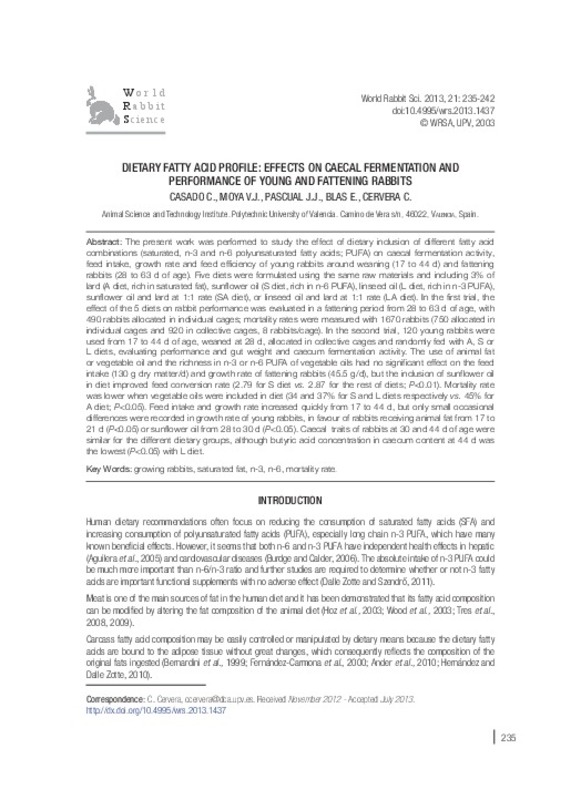JavaScript is disabled for your browser. Some features of this site may not work without it.
Buscar en RiuNet
Listar
Mi cuenta
Estadísticas
Ayuda RiuNet
Admin. UPV
Dietary fatty acid profile: effects on caecal fermentation and performance of young and fattening rabbits
Mostrar el registro completo del ítem
Casado, C.; Moya, J.; Pascual, JJ.; Blas Ferrer, E.; Cervera Fras, MC. (2013). Dietary fatty acid profile: effects on caecal fermentation and performance of young and fattening rabbits. World Rabbit Science. 21(4):235-242. https://doi.org/10.4995/wrs.2013.1437
Por favor, use este identificador para citar o enlazar este ítem: http://hdl.handle.net/10251/34956
Ficheros en el ítem
Metadatos del ítem
| Título: | Dietary fatty acid profile: effects on caecal fermentation and performance of young and fattening rabbits | |
| Autor: | Casado, Cristina Moya, Javier Pascual, Juan José Cervera Fras, Mª Concepción | |
| Entidad UPV: |
|
|
| Fecha difusión: |
|
|
| Resumen: |
[EN] The present work was performed to study the effect of dietary inclusion of different fatty acid combinations (saturated, n-3 and n-6 polyunsaturated fatty acids; PUFA) on caecal fermentation activity, feed intake, ...[+]
|
|
| Palabras clave: |
|
|
| Derechos de uso: | Reserva de todos los derechos | |
| Fuente: |
|
|
| DOI: |
|
|
| Editorial: |
|
|
| Versión del editor: | https://doi.org/10.4995/wrs.2013.1437 | |
| Código del Proyecto: |
|
|
| Agradecimientos: |
|
|
| Tipo: |
|









